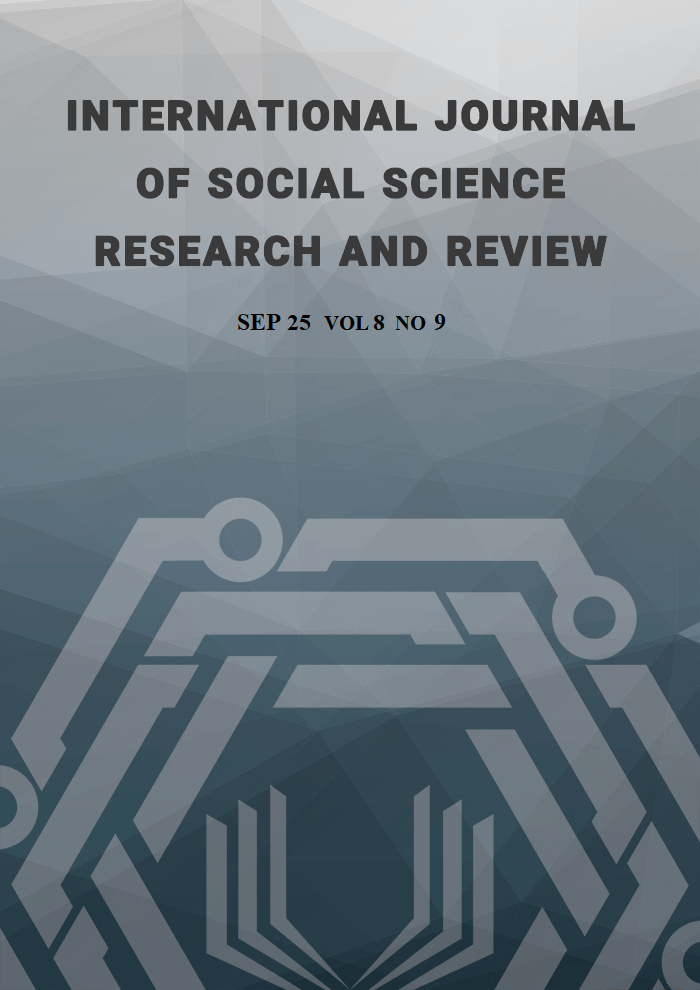Art and Power in Colonial India
Resistance and Control
Abstract
This study examines how visual art served as both a means of nationalist resistance and an instrument of imperial control in British colonial India. In order to defend colonial domination, art schools and institutions under British rule imposed Western academic realism, rejecting native Indian artistic traditions as inferior and archaic. Indian artists were reduced to artisans by art schools in places like Madras, Calcutta, Bombay, and Lahore, which imposed European aesthetic standards and matched art with colonial economic interests. This cultural dominance, which reflected a larger colonial project of material, cultural and intellectual subjugation, attempted to reshape Indian identity by regulating artistic expression. In the early 20th century, a nationalist counter-movement known as the Bengal School of Art arose in response. Under the direction of Abanindranath Tagore and with assistance from individuals like Ananda Coomaraswamy and E.B. Havell, the School brought back traditional techniques, mythological themes, and indigenous styles as a way to resist colonial realism and assert cultural identity. This artistic renaissance was supported by organisations such as the Indian Society of Oriental Art, which promoted an anti-Western, spiritual interpretation of Indian modernism with roots in precolonial history. The article also discusses post-independence artists' criticisms of the Bengal School, who saw its revivalist spirituality as out of step with current social and political issues. In its conclusion, this study shows how visual art in colonial India was an area of contention where colonial power was both used and resisted, highlighting the close connections between politics, identity, and art during this pivotal time in Indian history.
References
2. Altbach, P. G., & Kelly, G. (1978). Education and colonialism. Longman.
3. Cohen-Aponte, A. (2021). Reimagining lost visual archives of Black and Indigenous resistance. Selva: A Journal of the History of Art, (3).
4. Coomaraswamy, A. K. (2017, January 20). Art and Swadeshi [E-book]. Internet Archive. https://archive.org/details/in.ernet.dli.2015.201377/mode/2up
5. Freire, P. (2017). Pedagogy of the oppressed (M. B. Ramos, Trans.; P. Mayo, Introduction). Penguin Books. (Original work published 1970)
6. Gal, N. (2024). "Politics in matter": Concrete expressions in contemporary Palestinian art of resistance. Art Journal, 83(2), 38–59.
7. Guha-Thakurta, T. (1992). The making of a new "Indian" art: Artists, aesthetics and nationalism in Bengal, c. 1850–1920. Cambridge University Press.
8. Guha-Thakurta, T. (1992). The ideology of the "aesthetic": The purging of visual tastes and the campaign for a new Indian art in late nineteenth/early twentieth century Bengal. Studies in History, 8(2), 237–281. https://doi.org/10.1177/025764309200800205
9. Kalra, V. (2022, December 4). On the 75th anniversary of the Progressive Artists’ Group, remembering their seminal role in shaping Indian art. The Indian Express. https://indianexpress.com/article/lifestyle/art-and-culture/75th-anniversary-progressive-artists-group-india-most-well-known-artists-art-8302901/
10. Kantawala, A. (2012). Art education in colonial India: Implementation and imposition. Studies in Art Education, 53(3), 208–222. National Art Education Association. https://www.jstor.org/stable/24467910
11. Kumar, R. S. (2019, September). R. Siva Kumar - Modern Indian art: A brief overview. Visva-Bharati. https://www.academia.edu/40244293/R_Siva_Kumar_Modern_Indian_Art_A_brief_overview
12. MAP Academy. (2025, July 7). Bombay Progressive Artists Group | Modern art. MAP Academy. https://mapacademy.io/article/bombay-progressive-artists-group/
13. MAP Academy. (2025, July 6). Revivalism. MAP Academy. https://mapacademy.io/article/revivalism
14. Menon, D. (2021). Review of Partisan aesthetics: Modern art and India’s long decolonization by S. Sunderason. Asian Ethnology, 80(2), 441–442.
15. Mitter, P. (1994). Art and nationalism in colonial India (1850–1922): Occidental orientations. Cambridge University Press.
16. Nkosinkulu, Z. (2023). Fanonian art practices: Toward a decolonial grammar of being. Journal of Black Studies, 54(5), 394–409.
17. Pal, S. (2024). The objectives of establishing art schools in colonial India by the British. Brainwave Journal, 5(2).
18. Prinseps. (2024, November 11). Progressive Artists' Group and M.F. Husain's impact on modern Indian art. https://prinseps.com/research/progressive-artists-group-m-f-husain-1-8-20/?srsltid=AfmBOooMhyANDibie6kHXmj4oKSxHj5D6LsVOok1pJy61gwYqRHQ7v9N
19. Tarapor, M. (1980). John Lockwood Kipling and British art education in India. Victorian Studies, 24(1), 53–81. http://www.jstor.org/stable/3826879
20. Trevelyan, as cited in Edwardes, 1861, p. 256
21. Thakurta, T. G. (1992). The ideology of the "aesthetic": The purging of visual tastes and the campaign for a new Indian art in late nineteenth/early twentieth century Bengal. Studies in History, 8(2), 237–281. https://doi.org/10.1177/025764309200800205
22. Udo, F., et al. (2025). Mapping public art to explore the decolonization and Africanization of space in the inner city of Durban, South Africa. South African Geographical Journal, 1–22.
23. Vidal, R. A. (n.d.). Geeta Kapur - When was modernism: Essays on contemporary cultural practice in India. Retrieved from https://www.scribd.com/doc/125390198/Geeta-Kapur-When-Was-Modernism-Essays-on-Contemporary-Cultural-Practice-in-India
24. Zavala, M. (2022, June 15). Cultural imperialism and hegemony (Working Paper No. 59). Portland State University, Economics Working Papers.
Copyright (c) 2025 Vidhi Golchha

This work is licensed under a Creative Commons Attribution-NonCommercial-NoDerivatives 4.0 International License.
Copyright for this article is retained by the author(s), with first publication rights granted to the journal. This is an open-access article distributed under the terms and conditions of the Creative Commons Attribution license (https://creativecommons.org/licenses/by-nc-nd/4.0/).





